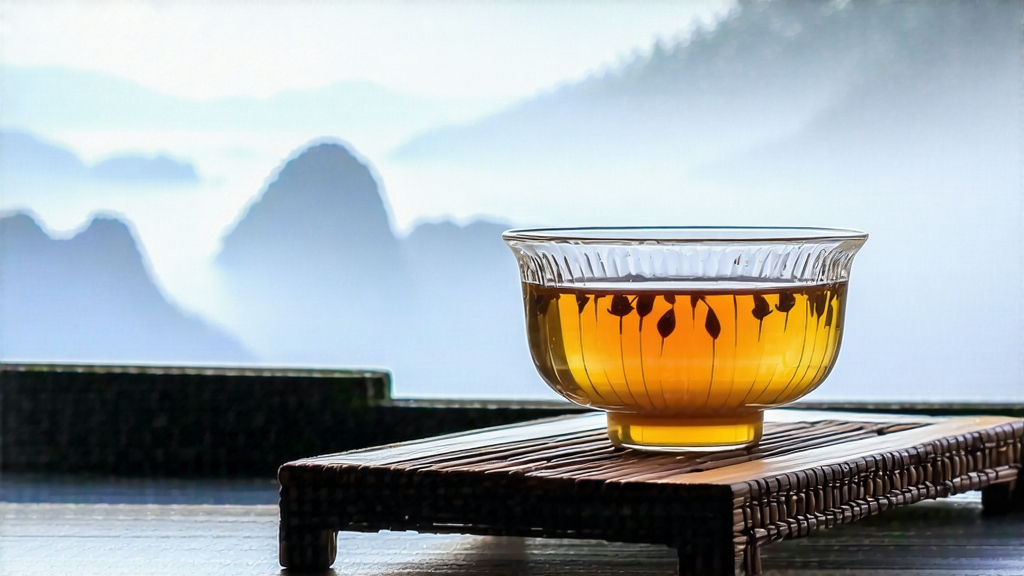
Among the six great families of Chinese tea, white tea is the least theatrical yet most elusive. It is not rolled, not roasted, not twisted into dramatic shapes; instead it is simply allowed to be—picked, withered, dried—trusting time and air to finish what the leaf began. Within this minimalist lineage, Bai Hao Yin Zhen, literally “White-Hair Silver Needle,” stands as the purest expression: only unopened buds, still wearing their silvery down like frost on a moonlit twig. To understand Silver Needle is to listen to a quiet conversation between cultivar, micro-climate and season, a dialogue that has continued for almost fifteen centuries along the rugged coast of Fujian province.
Historical whispers
The first verifiable tribute of “white tea” appears in the Song-era imperial ledger of 1064 CE, but those cakes were pressed from larger leaves and steamed green, a distant cousin to today’s needle. The bud-only style emerged during the late Ming dynasty when loose-leaf infusion replaced whisked powders and the court began to value visual elegance as much as flavor. By 1796, the Jiaqing Emperor’s chronicles record “tiny silver spears” arriving from northeast Fujian, freighted in lead-lined boxes to keep their perfume from sea humidity. European merchants tasting the liquor in Canton christened it “Silver Needle” and floated it down the Pearl River toward London parlors, where its pale color baffled drinkers accustomed to inky Bohea. For the next two centuries the bud remained a curiosity; production rarely exceeded a few hundred kilos, most absorbed by Cantonese pharmacies that prized its “cooling” nature. Only after 2003, when the Chinese domestic market rediscovered white tea’s low-caffeine, antioxidant-rich profile, did Silver Needle step from apothecary shelf to teahouse altar, its price rivaling that of finest Longjing.
Terroir: two birthplaces, one soul
Authentic Silver Needle is now protected under China’s geographical indication as two micro-appellations: Fuding in the northeast of Fujian and Zhenghe in the interior. Fuding, hugging the East China Sea, enjoys a maritime monsoon climate: mild winters, fog-laden springs, sandy red phyllite soil that drains quickly yet holds warmth. The dominant cultivar, Fuding Da Bai Hao (“Big White Down”), develops buds that are plump, 2.5–3 cm long, sheathed in a microscopic fur that reflects light like spun glass. Zhenghe, higher and more continental, ripens its Da Bai cultivar two weeks later; the buds are slightly slimmer, the down more ivory than platinum, yielding a liquor that is rounder, sometimes evoking dried longan. Purists debate which terroir is “true,” but cup character is less a matter of latitude than of the day-by-day decisions made once the bud is pinched from the bush.
Plucking etiquette
The harvest window is brutally short: when the bud reaches “fish-tail” stage—still sheathed in two tiny scales yet already swollen with the next leaf primordium—pickers have roughly 72 hours before it unfurls. Work begins at dawn, while dew is still a cold pearl on the tip; any later and sunlight will start enzymatic oxidation that muddies the pristine profile. Standards demand “no nail, no glove, no ring,” because the slightest pressure bruises the bud, creating a brown thumbprint that even the gentlest wither cannot erase. A skilled woman can gather 600 g of buds in a morning, enough for barely 100 g of finished tea once moisture departs.
Craft: the art of doing almost nothing
Unlike green tea that kills green enzymes in a wok or oven, white tea leaves enzymes alive, coaxing them into a slow ballet that hovers at the edge of oxidation. The traditional process has three movements:
- Withering: buds are laid 2 cm deep on bamboo trays stacked like shelves in a sun-lit corridor. For the first six hours they bask in soft spring sun (26 °C, 65 % RH), then are moved indoors where mountain breeze wafts through latticed windows. Over the next 30–40 hours the bud loses roughly 70 % of its moisture, turning from jade to pewter while endogenous enzymes convert grassy aldehydes into floral lactones.
- Pile resting: trays are stacked, creating a micro-environment of 28–30 °C that equalizes moisture. This